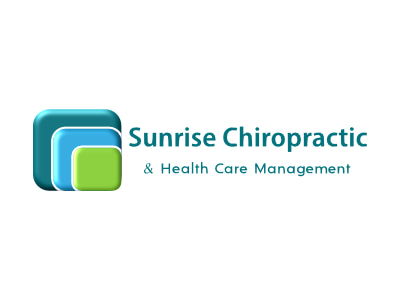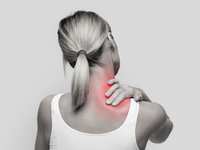- Categories :
- More
Does Chiropractic Care Help with Damaged Discs?

Does Chiropractic Care Help with Damaged Discs?
Do you have back pain due to a problem with your discs? Chiropractic care could relieve your symptoms and may even help you avoid surgery.
The Important Role of Spinal Discs
Discs cushion the spaces between each of the vertebrae in your spine and prevent these small bones from rubbing together when you move. The gel-like core of each disc is covered by a tough protective outer layer.
Discs act as shock absorbers and are essential for pain-free movement when you bend, walk, or jump. Unfortunately, discs can become damaged due to aging, injuries, or degenerative diseases. Types of disc damage include:
- Herniated Discs. A herniated disc happens when the soft inner core of the disc protrudes (herniates) through a tear in the outer covering. The herniated part of the disc presses on nerves, causing pain, numbness, and weakness. Herniated discs may also inflame the nerve root.
- Bulging Discs. Part of the disc protrudes, but the inner core remains safely inside the outer covering if you have a bulging disc. Bulging discs cause the same symptoms as herniated discs, although symptoms tend to be less severe.
- Degenerative Disc Disease. Wear and tear affects your entire body as you age, including your spinal discs. Over time, discs become thinner and lose some of their cushioning ability. They also become dryer, increasing the risk for cracks in the outer covering. Degenerative disc disease can affect all the disks in your back, including both those in your neck and back. Pain, tingling, numbness, and muscle weakness can occur as the discs become damaged due to wear and tear.
How Chiropractors Treat Damaged Discs
Chiropractors use several treatment methods for damaged discs, including:
- Adjustments. Also called spinal manipulation, adjustments keep your vertebrae properly aligned. Adjustments reduce pressure on nerves and decrease inflammation responsible for pain. Your chiropractor performs adjustments by using quick, forceful movements with the hands or handheld activator. A cohort research study published in BMJ Open in 2022 noted that spinal manipulation significantly reduced the need for surgery for adults with herniated discs and/or lumbosacral radiculopathy (compressed nerve roots).
- Flexion-Distraction Therapy. Flexion-Distraction therapy gently stretches the spine and increases the space between the vertebrae, allowing bulging or herniated discs to return to their normal positions. This therapy, performed on a special moving table, improves blood flow, helping oxygen and nutrients reach damaged areas.
- Spinal Decompression Therapy. This therapy uses traction to stretch the spine and creates negative pressure that pulls the disc back into place. A motorized table separates the vertebrae surrounding a damaged disk, which not only relieves pressure, but may help improve the amount of fluid in the disk. The therapy can reduce the size of disk herniation, according to a case series published in the Journal of Chiropractic in 2024. A herniated disk decreased in size by 29.5% in one case study in the series. A 36-year-old woman received spinal decompression and spinal manipulation therapies, low-light light therapy and electrical muscle stimulation during her treatment. After two months, she reported a 90% improvement in her symptoms and was pain-free at three months.
- Massage. Massage gently stretches tight muscles and relieves painful muscle spasms. The therapy also reduces inflammation, boosts flood flow, and triggers the release of natural, pain-relieving hormones, like endorphins and serotonin.
- Pelvic Blocking. This simple treatment involves placing wedges under your pelvis to support and realign the sacroiliac (SI) joints. These joints connect the lower part of your back to your pelvis. Pelvic blocking reduces inflammation and eases pressure on discs, nerves, and muscles.
- Cold Laser Therapy. Cold laser therapy, also called low-level light therapy, may reduce pain and numbness, improve flexibility, and promote healing.
- Exercises. Your chiropractor can show you a few exercises designed to stabilize your spine, improve your posture, and increase your range of motion. Exercises also help you strengthen the muscles that support your spine.
Surgery isn't the only option for damaged discs. Chiropractic care offers a natural approach to healing and pain management. Ready to find out if chiropractic treatment could help you? Contact our office.
Sources:
Mayo Clinic: Bulging Disk vs. Herniated Disk: What's the Difference, 3/12/2024
BMJ Open: Association Between Chiropractic Spinal Manipulation and Lumbar Discectomy in Adults with Lumbar Disc Herniation and Radiculopathy: Retrospective Cohort Study Using United States’ Data, 12/16/2022
https://pmc.ncbi.nlm.nih.gov/articles/PMC9764600/
Journal of Chiropractic: Reduction of the Size of a Lumbar Disc Herniation Using Non-Surgical Spinal Decompression Combined with Chiropractic Care, 9/26/2024
Cleveland Clinic: Degenerative Disk Disease, 2/4/2025
https://my.clevelandclinic.org/health/diseases/16912-degenerative-disk-disease
MedlinePlus: Herniated Disk, 8/7/2024

















